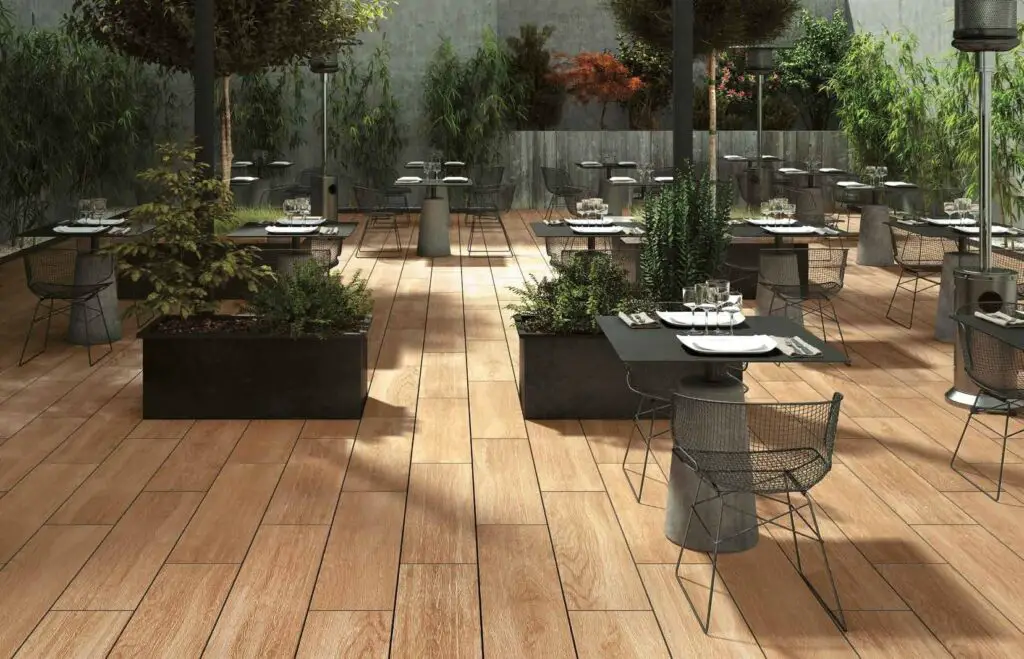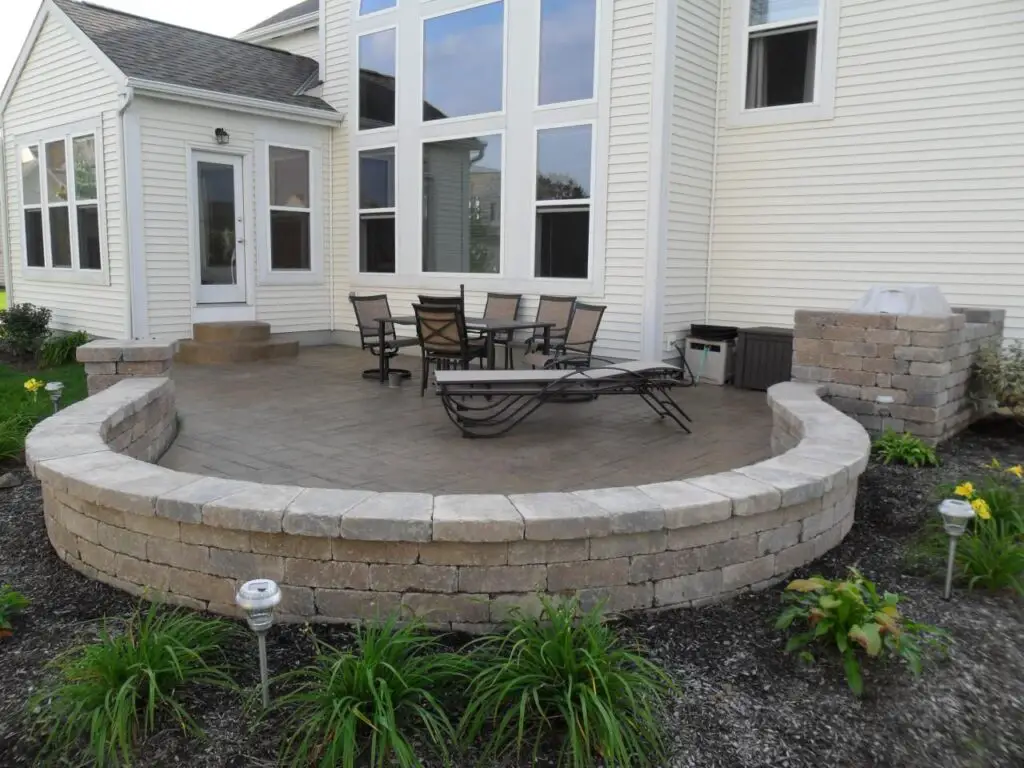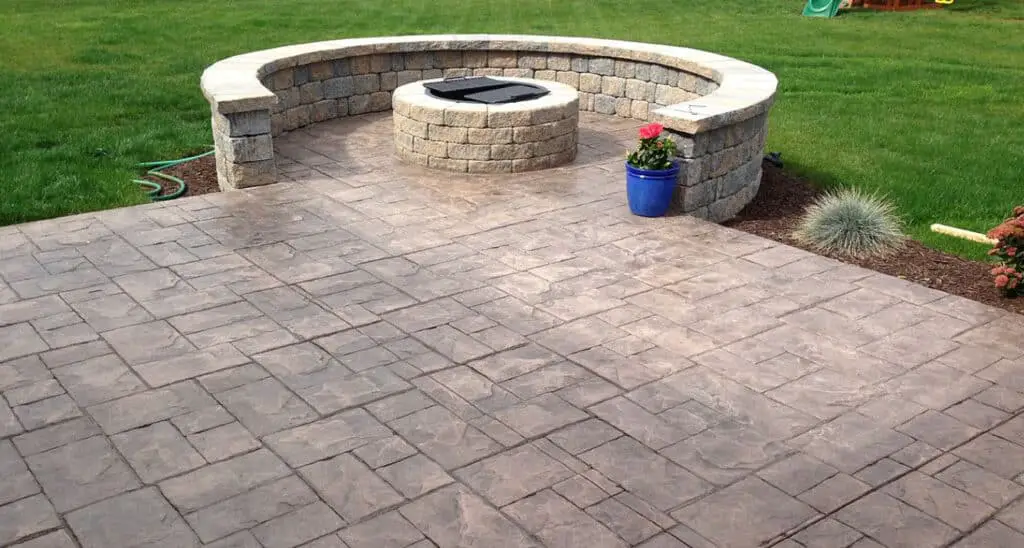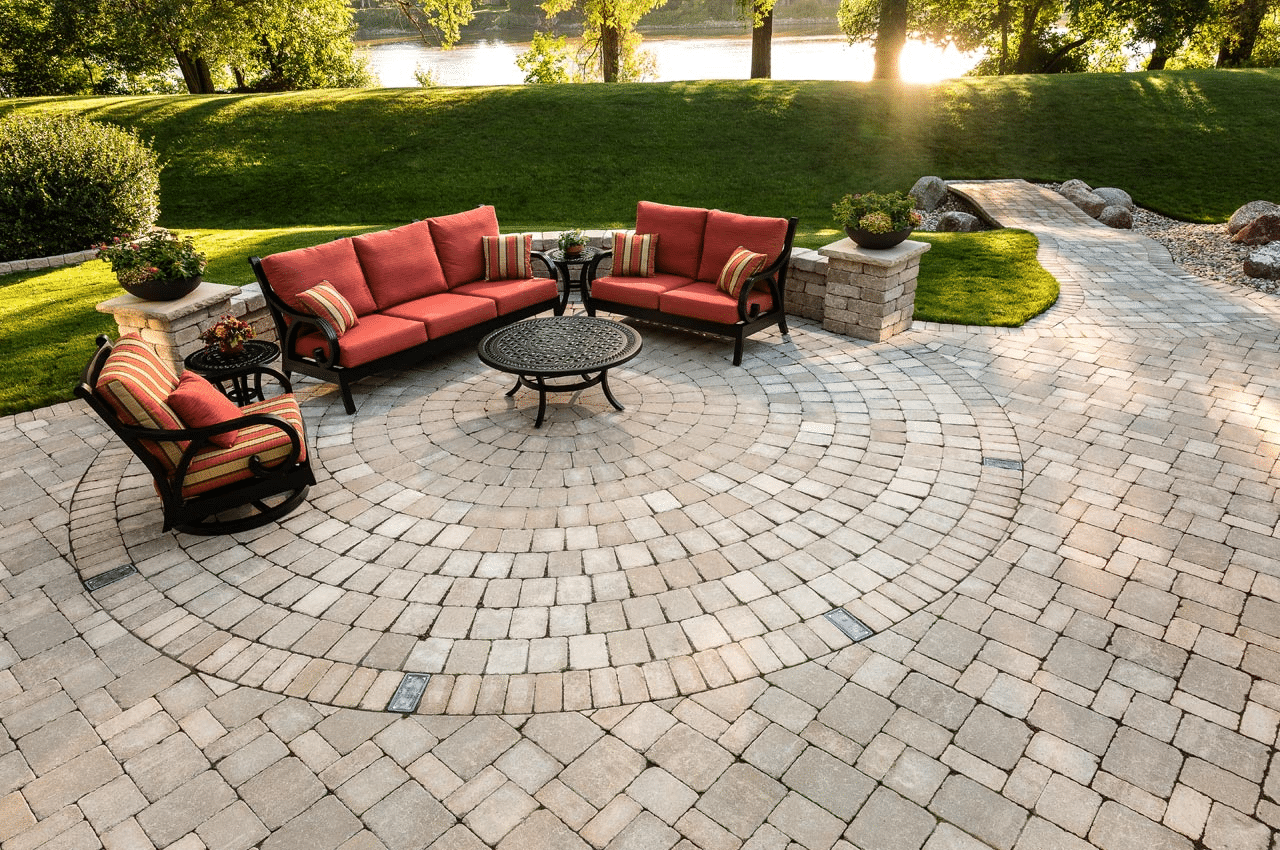How To Cover Concrete Patio
Introduction
How To Cover Concrete Patio: A variety of covering options that cater to different preferences and budgets. If you’re looking for a cost-effective solution, we’ll show you how to work with materials that won’t break the bank. On the other hand, if you’re willing to invest a bit more, we’ll delve into premium choices that will leave your patio looking like a high-end resort. Stains penetrate the concrete, creating a natural and mottled look, while paint provides a wide range of color options.
Beyond aesthetics, covering your concrete patio also serves practical purposes. Shielding it from the elements not only preserves its longevity but also provides a sheltered space where you can enjoy the outdoors regardless of the weather. Whether it’s raining, scorching hot, or chilly, you’ll have a comfortable retreat that you can utilize year-round.
But this guide is not just about giving you a laundry list of covering ideas. We’ll also discuss essential preparatory steps, string lights safety considerations, and tips for maintaining your newly covered patio. Our aim is to equip you with the knowledge and confidence to embark on this home improvement project with ease. Both options can help cover minor imperfections and give the floor a fresh, new look.

What is the cheapest way to cover a concrete patio?
Inexpensive Ways to Cover Concrete Patios
- Use an Outdoor Rug. Image Source: anteprugs.com.
- Be Creative With Paint. Image Source: royaldesignstudio.com.
- Building a Decking Floor. Image Source: homestratosphere.com.
- Using Concrete Stamps.
- Lay Concrete Blocks.
- Stain the Concrete.
- Cover With Colored Concrete.
- Cover With Tiles.
One popular and versatile method to cover a concrete patio is by using patio pavers. These interlocking stones or tiles come in various materials, such as concrete, brick, or natural stone. Installing patio pavers over your existing concrete surface is a relatively straightforward process, and it allows for creative patterns and designs.
A concrete overlay is a thin layer of concrete that can be applied directly over the existing patio surface. This method allows you to change the color, texture, or design of the concrete, giving your patio a fresh look without the need for a complete demolition.
If you prefer a warmer and more natural aesthetic, consider covering your concrete patio with wooden decking. There are various decking options available, including traditional wood, composite materials, and deck tiles. Decking not only transforms the appearance of your patio but also adds a comfortable and inviting feel.
Stamped concrete is another technique to consider when covering your existing patio. It involves impressing patterns or textures onto the concrete surface, mimicking the look of other materials like stone, brick, or wood. Stamped concrete can give your patio a high-end appearance at a fraction of the cost of using actual materials.
Outdoor tiles are a versatile and stylish option for covering concrete patios. They come in a variety of materials, colors, and patterns, allowing you to customize the look of your patio to suit your taste. Outdoor tiles are typically easy to install and require minimal maintenance.
Can you cover an existing concrete patio?
But there’s a simple solution, whether you want to dress up a bland patio or hide an aging one. Covering concrete with paver bricks is much easier than pouring new concrete or laying paving stones the traditional way. It requires less skill and less time, and it’s a whole lot easier on your back.
One of the simplest and most affordable ways to cover a concrete patio is by using outdoor rugs. These rugs come in various sizes, colors, and patterns, allowing you to find one that suits your style. Outdoor rugs not only add a pop of color and warmth to your patio but also provide a comfortable surface for bare feet.
Patio pavers are an excellent cost-effective option for covering a concrete patio. Made from various materials such as concrete, brick, or stone, pavers are easy to install and can quickly transform the look of your patio. They come in different shapes and sizes, allowing for creative patterns and designs.
Pea gravel is a low-cost and versatile option for covering a concrete patio. By spreading a layer of pea gravel over the concrete, you can create a charming and rustic surface. It also offers excellent drainage, preventing water from pooling on your patio.
If you’re looking for an inexpensive way to refresh your concrete patio’s appearance, consider using concrete stain or paint. Stains penetrate the concrete to create a natural-looking finish, while paint provides a wide range of color options. Both options can give your patio a new lease on life without breaking your budget.
What is the cheapest way to cover a concrete floor?
Vinyl. You can’t go wrong with vinyl that’s designed to go directly over concrete. Vinyl is durable, easy to install, and highly moisture-resistant. The best options for both appearance and ease of installation are vinyl planks and sheet vinyl.
One of the simplest and most cost-effective ways to cover a concrete floor is by using area rugs or carpets. These come in various sizes, styles, and price ranges, allowing you to find an option that fits your budget and complements your decor. Area rugs not only add warmth and comfort to the space but also serve as a design element that can tie the room together.
A can of concrete stain or paint is a relatively inexpensive solution for transforming the appearance of a concrete floor. Stains penetrate the concrete, creating a natural and mottled look, while paint provides a wide range of color options. Both options can help cover minor imperfections and give the floor a fresh, new look.
Vinyl and linoleum flooring are cost-effective choices for covering a concrete floor. These materials come in various styles, including wood, stone, and tile designs, offering versatility in achieving the desired aesthetic. Additionally, vinyl and linoleum are relatively easy to install and maintain.
Peel-and-stick tiles are a budget-friendly option that allows you to mimic the look of more expensive materials without the high cost. These self-adhesive tiles are available in a wide array of designs and sizes, making it easy to create the desired effect while saving on installation expenses.

How do you beautify a concrete patio?
Concrete Patio Ideas
- Paint a Pattern. Yes, you can paint your concrete slab.
- Lay Decking Flooring. Did you know you can lay decking over a concrete slab?
- Add Curves With Pavers.
- Lay Slate Tiles.
- Stain the Concrete to Look Like Tile.
- Add a Beautiful Outdoor Rug.
- Paint Concrete.
- Dress it Up.
Before you begin the beautification process, thoroughly clean the concrete patio to remove any dirt, stains, or debris. Consider pressure washing for a more thorough clean. Inspect the surface for any cracks or damage and make necessary repairs to ensure a smooth and even base for your enhancements.
Invest in comfortable and stylish outdoor furniture to create a cozy seating area. Opt for weather-resistant materials like metal, wicker, or teak to ensure longevity. Add cushions and throw pillows in vibrant colors or patterns to add a pop of personality to the space.
Lay down an outdoor rug to instantly add warmth and comfort to your concrete patio. Outdoor rugs come in various sizes and designs, allowing you to choose one that complements your overall outdoor decor. They not only provide a soft surface underfoot but also help define different areas of the patio.
Introduce potted plants, flowers, and greenery to bring life and vibrancy to your concrete patio. Choose a variety of plant sizes and textures to create visual interest. Consider vertical garden solutions or hanging planters to maximize space if your patio is small.
What is the best covering for concrete patio?
Polyaspartic coatings are a newer option for outdoor concrete patios and offer excellent durability and UV resistance. They can be applied quickly and your floors will be ready for use in just three hours after applying and will also provide a beautiful, glossy finish.
Patio pavers are a popular and versatile option for covering a concrete patio. These interlocking stones or tiles come in various materials, such as concrete, natural stone, and brick. Patio pavers are known for their durability, ease of installation, and the wide range of design possibilities they offer. They can create a visually stunning and inviting patio surface that complements any outdoor setting.
A stamped concrete overlay is an excellent choice if you prefer to maintain the concrete’s existing surface but want to add texture and design. With stamped concrete, patterns and textures are imprinted on the concrete using stamps, mimicking the look of other materials like stone, brick, or wood. This option provides a cost-effective way to achieve a high-end appearance.
Porcelain or ceramic tiles are both beautiful and practical choices for covering a concrete patio. These tiles are durable, resistant to fading, and come in various styles and sizes. They are easy to clean and maintain, making them suitable for high-traffic areas and outdoor use.
Composite decking is a low-maintenance and eco-friendly option for covering a concrete patio. Made from a blend of wood fibers and recycled plastic, composite decking offers the appearance of real wood without the associated maintenance. It resists rot, fading, and splintering, making it an ideal choice for outdoor spaces.
What is the cheapest material for patio cover?
Wood is more expensive then is aluminum and steel is more expensive than wood. Of all the different materials used to construct patio covers and pergolas, I’d have to say that the aluminum covers are the most affordable.
Aluminum patio covers offer a good balance between affordability and durability. They are lightweight, rust-resistant, and require minimal maintenance. Aluminum covers are available in various designs and finishes, making them a popular choice for budget-conscious homeowners.
Shade cloth is an economical choice for providing shade and protection from the sun. It is made from a lightweight, breathable fabric that blocks a percentage of UV rays while allowing air to circulate. Shade cloth is easy to install and comes in various levels of sun protection, giving you control over the amount of shade provided.
Bamboo or reed patio covers provide a natural and rustic appearance while being relatively affordable. These materials are lightweight, eco-friendly, and can add a tropical vibe to your outdoor space. They are often used as pergola covers or roll-up shades.
Fabric awnings are a cost-effective way to cover a patio and provide shade. They come in various designs, colors, and patterns, allowing you to customize the look of your outdoor area. Fabric awnings are a popular choice for those who want a retractable or adjustable shading option.
What can you lay on top of concrete?
Pavers
Fortunately, you can put pavers directly over existing concrete. It’s a common practice and a great way to upgrade your concrete surfaces.
Patio pavers are interlocking stones or tiles made from concrete, brick, natural stone, or other materials. They are an excellent choice for covering a concrete patio or walkway. Patio pavers come in various shapes, sizes, and patterns, allowing you to create unique and visually appealing designs.
Tiles, such as ceramic, porcelain, or natural stone tiles, are ideal for laying on top of concrete floors. They come in various colors, textures, and styles, making them suitable for indoor and outdoor use. Tiles are durable, easy to clean, and can instantly transform the look of a concrete surface.
Wood decking creates a warm and inviting atmosphere on a concrete patio or balcony. You can lay wood decking directly on top of the concrete surface using sleepers or supports. Wood decking adds a natural and cozy touch to your outdoor space and provides a comfortable surface for walking or lounging.
Laminate and engineered flooring can be laid over concrete floors with the help of an underlayment. These materials offer a cost-effective and attractive alternative to hardwood flooring, providing a wide range of styles and finishes to choose from.
What material is used for covered patio?
None of the materials are perfect because they all have flaws. For your desired patio cover, aluminum, wood, vinyl, and alumawood are excellent options.
Wood is a classic and versatile material for covered patios. It provides a warm and inviting ambiance, making it ideal for creating a cozy outdoor living area. Popular choices include cedar, redwood, and pressure-treated lumber. Wood can be used for the patio roof structure, beams, and posts. For the roof covering, options include wood shingles, shakes, or corrugated metal panels.
Metal patio covers are known for their durability and low maintenance. Common metals used for patio covers include aluminum and steel. Aluminum is lightweight, rust-resistant, and comes in various finishes, making it a popular choice for modern and contemporary designs. Steel offers greater strength and can be used for larger patio spans.
Polycarbonate panels are a popular option for patio roof covering. These translucent or clear panels are lightweight, impact-resistant, and provide UV protection. They allow natural light to filter through while offering shelter from the rain and UV rays.
Composite materials, such as wood-plastic composites (WPC) or engineered wood, combine the benefits of wood and plastic. They are resistant to rot, insects, and warping, making them a durable and low-maintenance option for patio covers.
Bamboo or thatch covers add a tropical and exotic feel to a covered patio. They are eco-friendly and provide a natural and organic look. However, they may require more frequent maintenance and may not offer the same level of weather resistance as other materials.

Conclusion
Covering a concrete patio opens up a world of possibilities, allowing you to create a personalized and inviting area that complements your lifestyle and home. Whether you choose to go with a simple and budget-friendly approach or opt for a more elaborate and luxurious design, the options are vast and exciting. Remember, this is your space to enjoy and cherish with family and friends. Whether you use it for relaxation, entertaining, or simply appreciating nature, a covered concrete patio will undoubtedly enrich your outdoor living experience.
Before you begin your project, remember to thoroughly assess your patio’s condition and consider any necessary repairs or cleaning. Proper preparation will ensure a smooth and successful covering process. Additionally, always prioritize safety, especially if you plan to work with power tools or construction materials. Personal touches, such as decorative elements, outdoor furniture, and lighting, can elevate your covered patio to a whole new level of comfort and ambiance.
Throughout this guide, we’ve explored various covering options such as patio pavers, tiles, outdoor rugs, decking, pergolas, and even greenery with garden elements. Each option offers its unique benefits, ranging from aesthetics and durability to ease of installation and maintenance. As you embark on this home improvement journey, don’t hesitate to get creative and think outside the box. So go ahead and unleash your creativity. Embrace the process of transforming your concrete patio into a captivating haven that reflects your personality and style.








